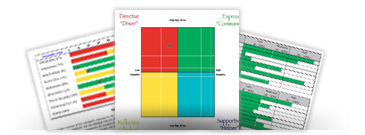How to Improve your Business through Customer Feedback?
Happy customers lead to a thriving business, which is why the topic of gathering and using customer feedback is a regular topic in sales training. By finding out what customers like and don’t like through a variety of feedback methods, a business can get insight about how to make adjustments.
Studying the good feedback as well as the bad is a necessary part of effective customer relationship management. Not only can consistent feedback improve sales, but it can also make customers feel involved and appreciated.
FEEDBACK METHODS
Social Media:
Scanning social media and forum postings can provide businesses with honest feedback in real time. In fact, that’s how Domino’s Pizza realized it had to improve its crust, which customers panned on Twitter as “bland” and “boring.” Instead of getting angry or ignoring the comments, Dominos launched a public effort to seek more feedback and introduce a brand new crust recipe.
Sales training can teach employees how to incorporate social media feedback into marketing campaigns as Domino’s did. Furthermore, software that can track social media mentions can be used as a Customer Relationship Management tool to improve sales and the brand experience.
Focus groups:
Focus groups allow businesses to hear directly from the customer in an environment where they can interact and have repeated dialogue. This is helpful because businesses can probe participants to fully understand the logic behind their reactions. Depending on the size of the company, focus groups can range from a dozen customers in a targeted demographic to 50 or even hundreds. This select audience can analyze new products before a launch or help figure out why longtime products are no longer proving useful.
If salespeople are taught in sales training to gather details on all customers and organize them with customer relationship management software, focus groups can easily be assembled from past and current customers who meet specific standards.
Surveys:
Whether by email or phone, surveys are a popular and useful way to find out what customers are thinking. Many companies use multiple-choice surveys, allowing customers to quickly check boxes to convey opinion. Experts say, however, that this is less useful than open-ended questions that don’t limit customer response. For the best survey feedback, give customers a few specific questions that require short comments in response. Also, provide a general box for commenting about anything.
Require customers to use their real name and contact information. This is easy to do if surveys are emailed to the address the customer used when making a purchase. Contrary to old beliefs that people preferred anonymity, today’s customers like businesses to know who they are and what they feel.
Pick up the phone
While email is a convenient way to respond, some experts believe the personal touch of a phone call is more effective for getting feedback. Many businesses are combining emailed surveys with follow-up phone surveys that allow customers to expound while hearing from a live person who can express concern, gratitude, an apology or the promise of improvement. Often a salesperson who has learned how to address post-closing needs of customers in sales training can choose to make these phone calls.
Whether by phone or email, surveys can promise customers some type of gift, bonus or entry into a drawing in order to encourage and reward feedback.
Feedback can propel a business to greater success and improve sales by helping to shape advertising campaigns, identifying opportunities to expand, confirming what a company is doing right and uncovering problems that could destroy your business if left unaddressed.
Another benefit: customers might even explain your business to you — so make sure you are listening!



